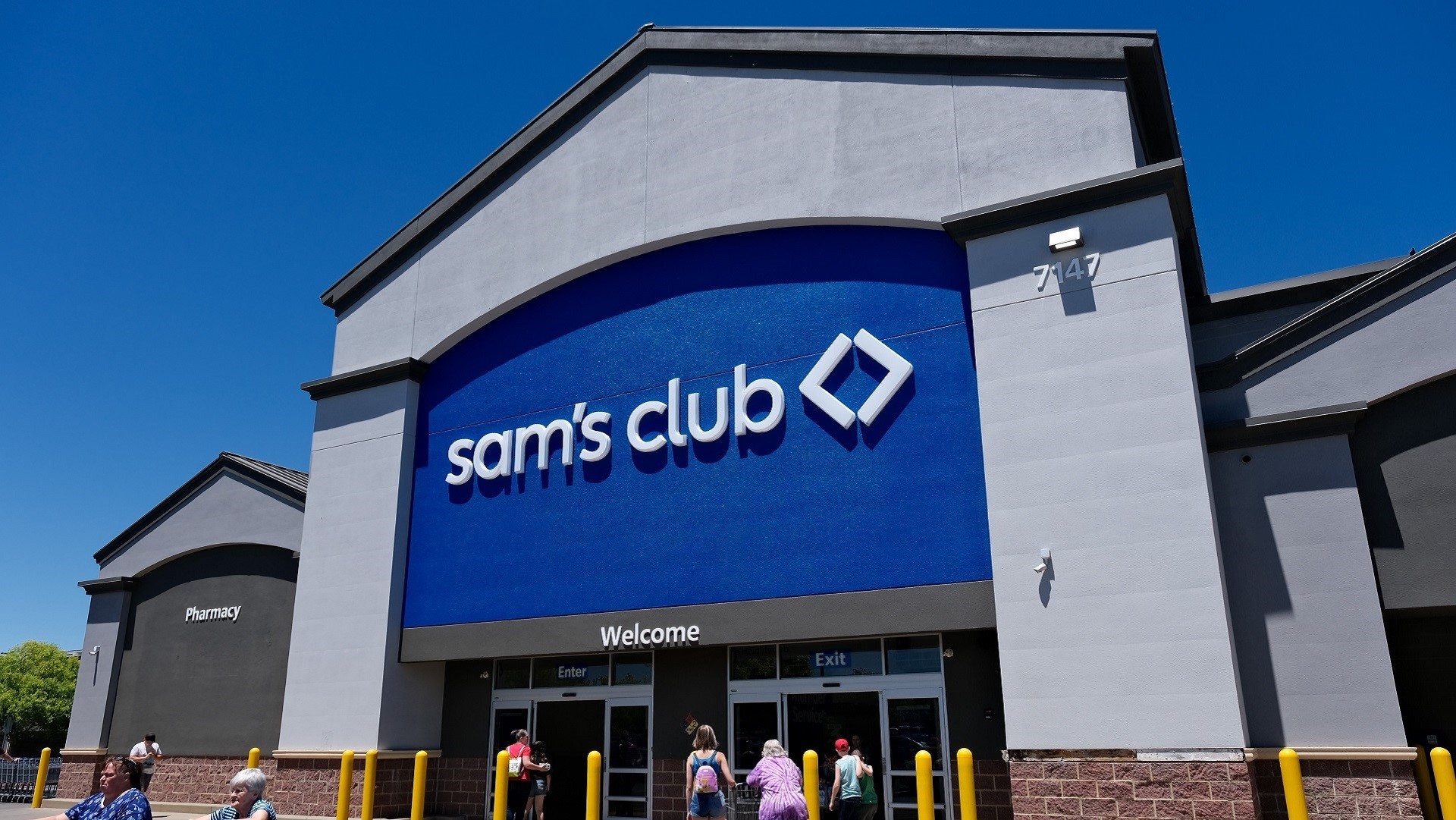Sam’s Club is a membership-based warehouse retail store chain that operates as a subsidiary of Walmart Inc. It was founded in 1983 and has since grown into a prominent player in the retail industry. With a focus on offering bulk purchases at competitive prices, Sam’s Club caters to both individual consumers and businesses, providing a wide range of products across various categories.
At Sam’s Club, customers can find an extensive selection of merchandise, including groceries, electronics, furniture, appliances, clothing, and more. The stores are designed to provide a convenient and efficient shopping experience, with spacious layouts and a warehouse-style setup that allows for easy navigation and access to products.
The key distinguishing feature of Sam’s Club is its membership model. Customers need to purchase a membership to gain access to the store and enjoy its benefits. Membership options include both individual and business accounts, offering different levels of perks and services. Members benefit from exclusive discounts, savings on bulk purchases, early access to sales and promotions, and access to additional services like optical centers, pharmacies, and fuel stations in select locations.
With its focus on bulk buying, Sam’s Club caters to a wide range of customers. Individual shoppers can take advantage of the competitive prices and stock up on everyday essentials or make significant savings on big-ticket items. Small businesses and organizations also benefit from Sam’s Club’s offerings, as it provides them with an opportunity to streamline their procurement process, access a wide range of products in bulk, and maximize cost savings.
Apart from its physical retail locations, Sam’s Club has also expanded its online presence. The company offers an e-commerce platform that allows members to conveniently shop online, access additional product options, and benefit from doorstep delivery. This online presence has become particularly relevant in recent times, enabling customers to shop from the comfort of their homes and providing an alternative shopping channel.
Furthermore, Sam’s Club has a reputation for its customer service and commitment to member satisfaction. The company strives to provide a positive shopping experience through attentive staff, responsive customer support, and a focus on meeting the diverse needs of its members. It continuously adapts to evolving customer preferences and market trends, ensuring that it remains a trusted and preferred destination for value-conscious shoppers.
A division of Walmart Inc., Sam’s Club is the membership warehouse club solution for everyday living. Company’s President and CEO is Kathryn McLay and it is headquartered is in Bentonville, AR. For the fiscal year ending January 31, 2022, Sam’s Club’s total revenue was $73.6 billion.
History of Sam’s Club
The history of Sam’s Club dates back to 1983 when it was founded by Sam Walton, the visionary entrepreneur and founder of Walmart. Sam Walton, known for his innovative retail concepts, recognized the potential of catering to small businesses and individual customers who wanted to buy in bulk at competitive prices.

Sam Walton’s inspiration for Sam’s Club came from a trip to a competitor’s warehouse store in South Korea. He was impressed by the concept of bulk buying and saw an opportunity to bring this model to the United States. Walton believed that by offering a wide range of products at lower prices, he could provide significant value to customers and create a new shopping experience.
On April 7, 1983, the first Sam’s Club store opened its doors in Midwest City, Oklahoma. The store, originally called “Sam’s Wholesale Club,” was designed as a membership-based warehouse retail format. It offered a vast selection of products, ranging from groceries to electronics and household items, all available for purchase in bulk quantities. The store’s layout was reminiscent of a warehouse, with high ceilings, large aisles, and shelves stocked with pallets of merchandise.
The initial response to Sam’s Club was positive, with customers embracing the opportunity to save money by buying in bulk. Recognizing the potential for growth, Walmart quickly expanded the Sam’s Club concept. By the end of 1983, there were six Sam’s Club locations in operation, primarily in the Midwest and South.
Throughout the 1980s, Sam’s Club continued its expansion, opening new stores in various regions of the United States. By the end of the decade, there were over 100 Sam’s Club locations nationwide. The success of the concept was attributed to its ability to serve the needs of small businesses, which appreciated the cost savings and convenience of purchasing supplies in large quantities.
In 1991, Sam’s Club underwent a significant change when it merged with Walmart’s warehouse club division, known as “Walmart’s Wholesale Club.” The merger strengthened Sam’s Club’s position within the retail industry and allowed for further expansion and operational efficiencies. With the merger, Sam’s Club became an integral part of the Walmart family of companies.
In the following decades, Sam’s Club continued its steady growth, expanding its footprint across the United States. The company also introduced various innovations to enhance the shopping experience for its members. It introduced technologies like self-checkout lanes, implemented online shopping platforms, and expanded its product offerings to meet changing customer demands.
Sam’s Club also extended its reach beyond the United States, opening stores in Mexico in 1991 and eventually expanding to other international markets. Today, Sam’s Club operates in several countries, including China, Brazil, and Canada, with its primary focus remaining on the United States.
In recent years, Sam’s Club has embraced digital transformation and e-commerce. It has enhanced its online presence, offering members the convenience of shopping online and providing additional services such as same-day grocery delivery and club pickup. These efforts have positioned Sam’s Club to adapt to the changing retail landscape and cater to evolving customer preferences.
Throughout its history, Sam’s Club has remained true to its founding principles of providing members with access to quality products at competitive prices. With its focus on bulk buying, commitment to member satisfaction, and the backing of the Walmart brand, Sam’s Club has become a trusted and prominent player in the warehouse retail industry, serving the needs of businesses and individual customers alike.
Sam’s Club Membership Model Explained
When it comes to shopping at warehouse stores like Sam’s Club, the general rule is that buying in bulk saves you money. However, deciding whether to pay for a membership at these stores can leave you questioning if it’s truly a better deal compared to your average grocery store.
Sam’s Club provides two membership options: Club and Plus, priced at $50 and $110 per year, respectively. The Club membership offers exclusive savings on Sam’s Club products, while the Plus membership provides additional benefits such as optical benefits, discounted prescriptions, and annual cashback to help members save on essential items.
In this article, we will explore the different types of Sam’s Club memberships, their associated benefits, and determine whether investing in a Sam’s Club membership is worthwhile considering the annual fee.
| Club | Plus | |
| Annual 2% cashback on eligible purchases | No | Yes |
| Free shipping on qualifying purchases | No | Yes |
| Free curbside pickup | No | Yes |
| Early shopping | No | Yes |
| Discounted prescriptions | No | Yes |
| Optical benefits | No | Yes |
| Member-exclusive savings | Yes | Yes |
| Sam’s Club Mastercard | 1% cashback | 3% cashback |
| Member-exclusive fuel prices | Yes | Yes |
| Free tire and battery center services | Yes | Yes |
| Complimentary household membership | Yes | Yes |
| Discounted add-on memberships ($45/year) | Yes | Yes |
| $50 annual fee | $110 annual fee |
Types of Sam’s Club
Sam’s Club provides two distinct membership options: Club and Plus. With the Club membership, members gain access to exclusive benefits like 1% cashback through the Sam’s Club Mastercard and discounted add-on memberships. On the other hand, the Plus membership, priced at $110 per year, offers an expanded array of benefits.
Pricing and Value Proposition of Sam’s Club
Sam’s Club is renowned for its pricing strategy and value proposition, which are central to its success in the retail industry. The company aims to offer its members a compelling value proposition by providing competitive prices, savings on bulk purchases, and a range of benefits that justify the annual membership fee. Here is a detailed explanation of the pricing and value proposition of Sam’s Club:
Competitive Prices: One of the primary reasons customers choose to shop at Sam’s Club is the competitive pricing it offers. By leveraging its buying power as a large retailer, Sam’s Club negotiates favorable prices with suppliers and manufacturers, allowing it to pass on savings to its members. This translates into lower prices compared to traditional retail outlets, enabling members to make substantial savings on their purchases.
Bulk Purchasing: Sam’s Club specializes in selling products in bulk quantities, which further contributes to its value proposition. Buying in bulk allows members to access significant cost savings. By purchasing larger quantities of items they frequently use, such as household supplies, non-perishable groceries, or office essentials, members can significantly lower their cost per unit and save money in the long run.
Exclusive Member Savings: Sam’s Club offers exclusive savings and discounts on a wide range of products to its members. These discounts can vary across categories, such as groceries, electronics, furniture, or clothing. Members have access to special pricing on select items, limited-time offers, and promotions, enabling them to maximize their savings while shopping.
Additional Benefits: In addition to competitive pricing, Sam’s Club provides additional benefits to enhance its value proposition. These benefits can include services like optical centers, pharmacies, fuel stations, and members-only perks like early access to sales events or extended return policies. The Plus membership, available at a higher annual fee, offers even more benefits such as optical benefits, discounted prescriptions, and cashback on eligible purchases.
Quality Assurance: Sam’s Club maintains a commitment to providing high-quality products to its members. While offering competitive prices, the company ensures that the products it sells meet the desired quality standards. This commitment to quality assurance enhances the overall value proposition, as members can have confidence in the products they purchase.
Cost Comparison: To demonstrate its value proposition, Sam’s Club often encourages members to compare prices with other retailers. The company may highlight examples where members can achieve significant savings by shopping at Sam’s Club instead of traditional supermarkets or other retail outlets. This approach reinforces the idea that joining Sam’s Club can lead to considerable cost savings.
Overall, Sam’s Club’s pricing and value proposition revolve around providing members with access to competitive prices, bulk purchasing opportunities, exclusive member savings, additional benefits, and quality products. By offering these advantages, Sam’s Club aims to deliver an appealing value proposition that justifies the annual membership fee and positions itself as a preferred shopping destination for value-conscious consumers and businesses.
Online Presence and Digital Initiatives of Sam’s Club
Positioned as the “no-frills” membership segment of Walmart, Sam’s Club is making notable strides in introducing technological advancements that rival the sophisticated retail experiences provided by renowned brands such as Apple or Amazon Go. These innovations cater to Sam’s Club’s tech-savvy customers who utilize mobile devices while shopping at the warehouse club.
Scan and Go Convenience
Sam’s Club has introduced a Scan and Go service that bears a striking resemblance to Apple’s in-store checkout system, which involves scanning purchased items into handheld devices carried by staff members who move around the store. However, Sam’s Club’s Scan and Go service takes it a step further.
The process is straightforward: Sam’s Club shoppers open the Sam’s Club app and scan the barcode of each item they add to their shopping carts. The app maintains a running tally of the cart’s contents. When customers are ready to complete their purchase, they can do so directly within the app.
Upon leaving the store, customers only need to present their digital receipt to a “greeter” stationed at the exit. The greeter scans the receipt, and the customer can proceed with their day, having completed the checkout process seamlessly.
There is no requirement to wait in queues or engage with sales assistants if you prefer not to. All you have to do is scan and go. The accompanying app even functions as a budgeting tool, assisting users in monitoring their spending during the shopping process. After undergoing over a year of testing in specific locations, the service has been extended to all 645 Sam’s Club stores in the United States and is presently being tested in several Walmart stores.
Boosting Ecommerce Sales with Endless Aisles
Sam’s Club is not solely focused on initiatives that transform in-store customers into cashiers; they are also exploring innovative ways to enhance online sales within their stores. Alongside the significant growth of 27% in ecommerce sales, credited in part to a website revamp according to Jamie Iannone, the President and CEO of samsclub.com, the introduction of “endless aisle” kiosks within the stores is generating increased digital revenue.
These in-store kiosks allow customers to browse online products, add them to their online cart, and have them shipped directly to their homes. Furthermore, store associates are trained to serve as “problem solvers” for customers, which further contributes to the boost in ecommerce sales. Iannone emphasized that if a member is unable to locate a desired product in the club, the associates are instructed to assist in finding it on samsclub.com, further strengthening the integration between in-store and online shopping experiences.
Easy Online Orders with “Club Pick-Up”
Sam’s Club has recently implemented significant improvements to its in-store pick-up facility, resulting in notable benefits for the company. While the service, known as Club Pick-Up, has been available for more than a decade, recent enhancements have elevated the convenience level for mobile customers of Sam’s Club.
With Club Pick-Up, customers have the ability to create and save shopping lists online and place their orders with Sam’s Club. When they are ready to visit a store and retrieve their items, they can utilize the Sam’s Club app to notify the retailer of their arrival. In select stores, designated parking spaces are even reserved for them, enabling quick and convenient drive-through collections.
Even in locations where dedicated parking is not available, the service remains fast and convenient through mobile check-ins upon entry, streamlining the pick-up process for customers.
Bringing Digital Innovation to the Club Environment
Sam’s Club is dedicated to enhancing the customer experience across various touchpoints, evident in initiatives like Scan and Go, endless aisles, and the revamped Club Pick-Up service. Recognizing the importance of addressing customer needs, Sam’s Club has introduced these innovations to tackle existing challenges. It remains to be seen whether these latest advancements will attract more customers and potentially influence the strategies of competitors like Costco and BJ’s.
Also Read: Walmart – Inside The World’s Largest Retailer
To read more content like this, subscribe to our newletter



